We get into an Uber car, and the driver passes by the Kremlin walls, guided by GPS. At the end of the ride, the bill turns out to be three times as expensive than usual. What is the matter? We check the route, and the screen shows that we travelled to an airport outside of Moscow. Impossible. We look again: the moment we approached the Kremlin, our location automatically jumped to Vnukovo. As we learned later, this was caused by a GPS fence set up to confuse and disorient aerial sensors, preventing unwanted drone flyovers.
Enlarge

Enlarge
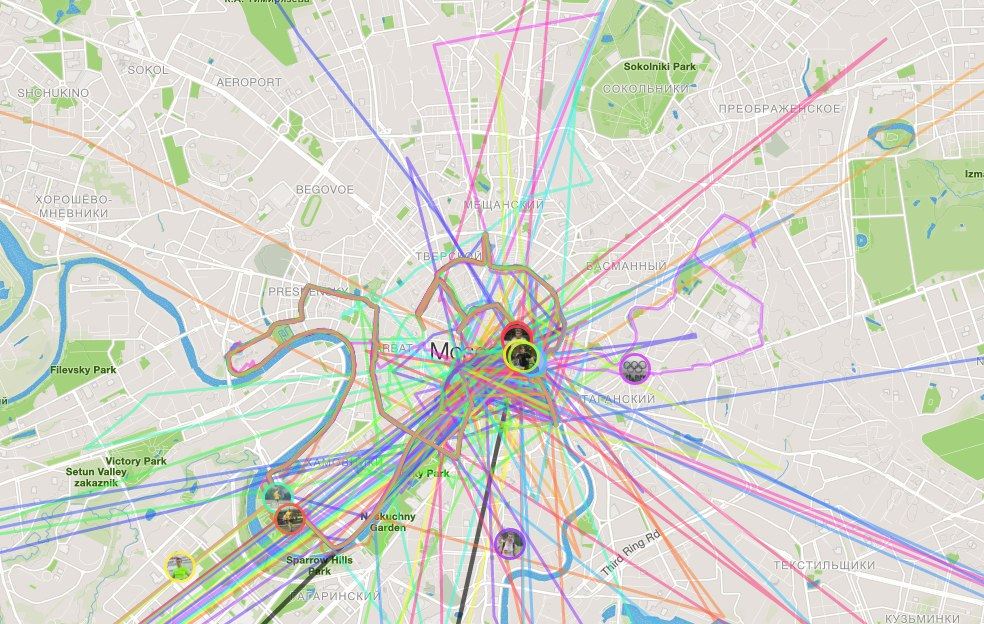
A New Kind of Urban Zoning
Our everyday life in the city has been greatly enriched by new technologies. Streets are upgraded with sensors, the urban becomes navigable and the citizen trackable through WiFi-networks, bluetooth signals and GPS-based applications. Today, these technologies are mainly implemented and instrumentalized by platform economies (serving the big capital of tech), acquiring a tight grip on the way our cities work. The main strategy here is to capitalize on the information that is being generated by the augmented city.
Over the past few years the city has quickly become a mesh of hectic laws and virtual borders: private airways, no-fly drone zones and geofences, places that lure in Pokémon Go players or get blurred on satellite imagery. One physical location is virtually occupied by multiple zones, different actors on a vertical axis. The process of urban zoning is traditionally defined as dividing topographically defined areas into zones (e.g. residential, industrial) in which certain land uses are permitted or prohibited by a political body. As a result of technological augmentation, zoning today is not limited to regulations on building heights, but extends to new, intangible spaces.
Enlarge

These new Zones, or vertical spaces, allow digital behemoth corporations to quickly exploit them as new markets and colonize the virtual ground outside of traditional jurisdictions, taking advantage of grey areas in the law. They capitalize on patterns of our movements, monetizing the extracted data, or the so-called ‘behavior surplus’ generated by mechanisms of surveillance. Services previously provided by governmental bodies, from security and energy management to public transportation, are now privatized and optimized through platform economies empowered by network technologies and big data. Google, Amazon, Facebook, Cisco, Siemens, IBM and the like all feed off the augmented city.
The platform economy disturbs our material reality: Airbnb spawns new gentrification effects, Uber disrupts (or aims to disrupt) transportation systems. The business model of the platform is based on the principles of militant growth over profit, extraction and aggravation of free user data, and a hostile approach towards laws and legislation. By implementing new services without consent, by default, platforms leave citizens and governments to opt out or object their effects retrospectively. First we enjoy the luxury and convenience Uber offers us, then later we realize how it causes contradictions and conflicts in the way our cities work.
But what is life like in the privatized city, structured by this new urban zoning? How can we benefit as citizens from the increase in sensing technologies, remote data-crunching algorithms, leaching geolocation trackers and parasite mapping interfaces? Can the imposed verticality of platform capitalism by some means enrich the surface of the city, and not just exploit it? Maybe our cities deserve a truly augmented reality – reality in which value generated within urban space actually benefits its inhabitants, and is therefore ‘augmented’ in the sense of increased or made greater. Is it possible to consider the extension of zoning not only as an issue, but also as a solution, a way to create room for fairer, more social alternatives? Can we imagine the sprawling of augmented zones today, still of accidental nature, being utilized or artificially designed for purposes other than serving capital?
Enlarge

The Zone at Work
Capital and public space have an increasingly complex and intense relationship. Walk through London, Berlin or Singapore and you can see how developers, investors and private real estate acquisitions have a direct influence on the appearance of a city. Legislation and governmental policies allow these two aspects of capital and public space in the city to further intertwine – take for example the phenomenon of the Special Economic Zone, such as Shenzen in China or Dubai Media City. Keller Easterling describes the history of these Zones in Extrastatecraft: The Power of Infrastructure Space, tracing it back to the Export Processing Zone (EPZ) and the ancient free trade zones that allowed for efficient transportation and rapid exchange of goods.
Originally developed for purposes of warehousing and shipping, the early free trade zones, sprawling between 1500 and 1930s, were located along major trade routes. Further spreading around airports, manufacturing centers and container ports from the 1950s to 1970s, or offshore financial districts and office parks in the 90s, zones eventually formed mini-cities and even developed into megapolises on their own, as was the case with Shenzhen (established as China’s first SEZ in 1980, growing from 30.000 to an estimated 18 million inhabitants in the following decades).
The EPZ was initiated in the mid-twentieth-century as an economical accelerator that could help developing countries to enter the global market. But ‘rather than dissolving into the domestic economy, as was originally intended, the EPZ absorbed more and more of that economy into the enclave’. In Easterling’s research, the Zone is analyzed as a tool: she investigates how the Zone reaches out beyond its borders to suck in more people, more resources, more capital. The real politics of the Zone seem to drastically differ from the claimed intent: instead of enriching the host country, the Zone draws cheap domestic labor from the hinterland – look at the notorious Foxconn factory in Shenzhen and underpaid immigrant workers in Dubai – while the profits tend to flow back into the hands of parasitizing multinational colonizers.
New Land, New People
Today these zone-projects are increasingly built from scratch outside of existing cities, on the outskirts of state territories and even on reclaimed isles off the mainland. The Zone as an island provides an ideal blank canvas, clean slates for extralegal experiments. Developed by upscale real estate firms, these artificial urban archipelagoes advertise themselves as investment opportunities, with the infamous example of Dubai’s The World and The Palm Islands megaprojects.
Enlarge
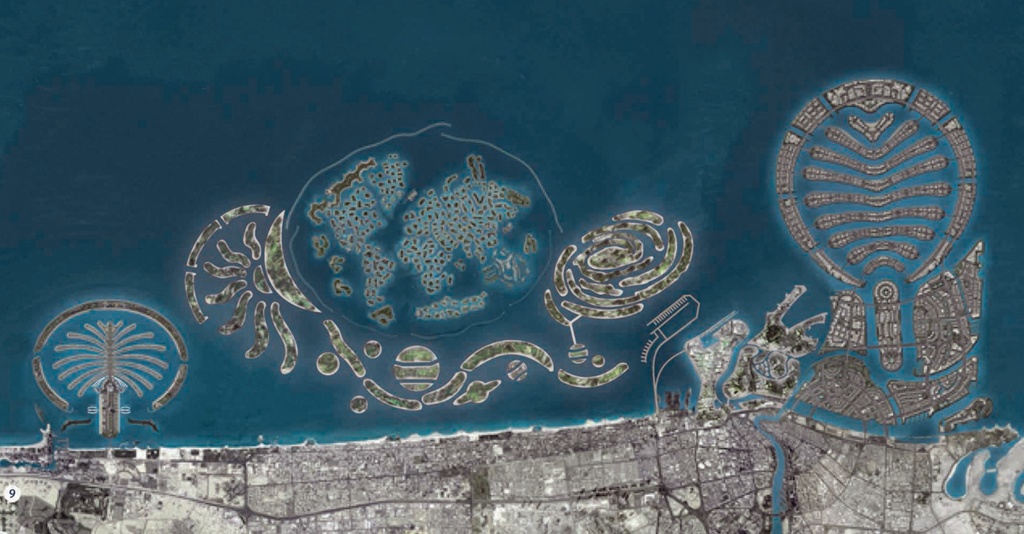
Source: Google Earth
But who is supposed to inhabit these islands? There is policy for that, too. After the Asian financial crisis and the SARS outbreak in 2004, the Singapore government offered tax incentives for property developers and boosted banking secrecy. These circumstances brought forth Sentosa Cove, a residential enclave off the coast of Singapore. Partly because of Singapore’s ‘Switzerland of Asia’ rebranding strategy, sixty percent of Sentosa Cove’s inhabitants are foreign. The Zone, as this example shows, does not necessarily encapsulate an existing part of a city or a social community – it prefers to create new land, and to bring in new citizens to populate it.
Luxury & Paranoia
A specific kind of city has spawned from the symbiotic relationship between governmental bodies and real estate investors, tailored to fit the Special Economic Zone. From door handles to sensors, this ‘city in a box’ can be purchased as one singular item and reproduced anywhere in the world, becoming a spatial product on its own. Prime example of this type of city is Songdo, a master-planned ‘smart’ or ‘ubiquitous city’, located within the Incheon Free Economic Zone in South Korea. The city grid is augmented with networking hardware and telecommunications systems by tech companies like Cisco, IBM, Arup and 3M. Completed in 2015, it resembles a barely populated high-tech utopia, where computers are literally built into streets and buildings. The residents enjoy Cisco’s ‘telepresence’ system, automatic garbage collection by the Envac group, and security measures such as smart keys that give access to certain spaces and public services. The technologically enhanced city promises a life of luxury, while simultaneously turning the zone into a gated community.
In a place devised for economic activity and designed to generate capital, its inhabitants might be assessed on their added value to the city. This brand new city of the future, in a box, won’t be for everyone. Local low-wage workers may not become the zone’s citizens to a full extent: high priced real estate expels them, turning them into migrants. When new Zones are created as clean slates, tech companies quickly move in to develop the city’s infrastructure, introducing hardware and software that circumstantially pushes certain people out and helps to enforce the borders.
Gated urban enclaves also proliferate within our ‘normal’ cities, perforating through the existing social fabric. Privatization of urban landscape affects our spatial rights, such as simply the right of passage: luxury stores and guarded residential areas already deny access to the poor and marginalized. But how do these acts of exclusion happen in cities dominated by the logic of platform capitalism? What happens when more tools become available to scan, analyze and reject citizens on the basis of their citizenship or credit score? Accurate user profiles come in handy when security is automated in urban space: surveillance induced by smart technologies, from electronic checkpoints to geofencing, can amplify more exclusion.
This tendency becomes clearly visible with Facebook being able to allow for indirect urban discrimination through targeted advertising. This is triggered by Facebook’s ability to exclude entire social groups from seeing certain ads based on their user profile, so that upscale housing-related ads might be hidden from them, making it harder for them to leave poorer neighborhoods. Meanwhile Uber is charging customers based on the prediction of their wealth, varying prices for rides between richer and poorer areas. This speculation on value enabled by the aggregation of massive amounts of data crystallizes new forms of information inequality in which platforms observe users through a one-way mirror.
Enlarge

Hop from Zone to Zone
The Zone emerges from special legislation for finance, and subsequently also attracts tech giants for reasons other than merely tax holiday. This is not surprising. Experiencing push-backs and regulatory obstacles when it comes to implementation of higher degrees of automation, from self-driving cars to delivery drones, technological accelerators intrinsically fantasize about more freedom, more flexible policies, more data extraction. Such as a Zone of exception, free of legal oversight and interference.
Enlarge
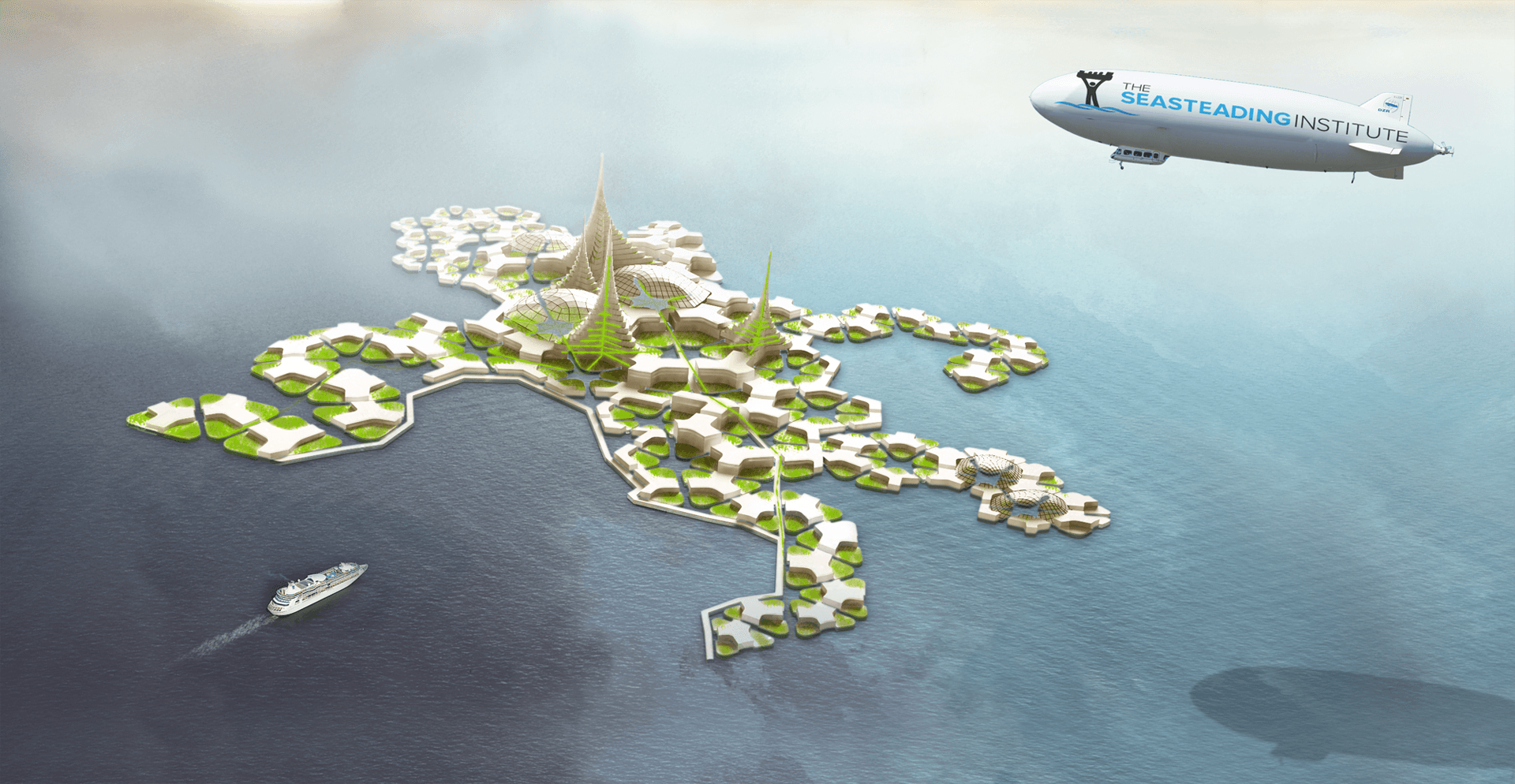
Source: seasteading.org
Silicon Valley has long been nurturing the libertarian dream of a lawless laboratory, an island (again, an island) outside of territorial waters, beyond the traditional nation-state jurisdiction. A Burning Man-like environment for new technologies, ‘a safe place to try out new things and figure out the effect on society’, as recurrently articulated by Larry Page. The infamous Seasteading Institute resembles the true embodiment of this ideal, aiming to build floating startup societies. ‘When seasteading becomes a viable alternative, switching from one government to another would be a matter of sailing to the other without even leaving your house’, said founder Patri Friedman at the first annual Seasteading conference in 2012.
Varying alternative legislation per Seastead could mean industries would be able to pursue their interest without UN/EU moderation on ethical topics like genetic modification, cloning or animal testing. Similar to Women on Waves’ offshore abortion centers, suicide tourism in Switzerland or birth tourism in the USA, people might go jurisdiction-shopping in search for the appropriate treatment. The principle or promise of flexible citizenship is that there is a Zone for each of us, without exception.
The Seasteading promo claims it can enrich the poor, but its initial designs are based on modified intercontinental cruise ships, and the promotional renders reveal luxurious yachts anchored offshore of the first Floating Island, all targeting at a specific prosperous public. So if Seasteading is the ultimate liberal, capitalist utopia, what could be its social and more inclusive counterpart? And if there could be a test-site not for the rich technological libertarians, but for a more inclusive society, could that also be mapped onto existing cities instead of having to seek liberation in endless variations of offshore enclaves?
Cultivating Counterspaces
The operation of prominent counter-spaces – abortion centers anchored in international waters and the like – is tightly bound to territorial borders and the legal definition of the Earth’s surface. A temporary visit to an extralegal zone, such as offshore floating islands, may enable a different combination of human rights, opening up new opportunities for minorities. But vertical zoning allows such exceptions to be located anywhere, granting users access to different regimes inside existing cities, without the requirement to physically move to a different location.
We need to imagine a type of counter-spaces that could be mapped on top of actual cities and profit from the temporary nature of new spatial zoning. The vertical aspect of this other sort of zone could enhance its elasticity, allowing it to change its shape and size according to circumstances. Elastic zones: fleeting, flexible and stackable. Could a meta-economic level of planning strategically transform the city, reinforcing governmental control and enabling measures against a Cisco, Amazon or Google monopoly on the digital infrastructure?
Enlarge

During the volatile Pokémon Go hype, one app created a new kind of urban density in a matter of days. New zones, supported by sponsored PokéStops and in-game ‘lure modules’, suddenly popped up on previously meaningless locations. The municipality of The Hague demanded developer Niantic to get rid of Pokémon in a protected national park which was swarming with Pokémon hunters. This ban made the pokémon that previously spawned in the park all show up in one spot: the sea boulevard of Kijkduin, where the Pokémon Go hype brought in new people on formerly unaugmented land. This ethereal urban density of Kijkduin relied on legal action and adjustments in the geo-spatial coding in the software: the creation of a No-Pokémon Go-Zone.
Hardline Enclosure
If platform economies take the city as a hostage, governmental bodies of the city can seek how to counter privatization on material grounds. The notorious Kremlin’s GPS spoofing fence sends false coordinates to any navigational app within the city center, thereby also disrupting the operation of Uber and Google Maps. Such gaps on the map, blank spaces are usually precoded in spatial software by platforms, and can expel certain technologies from a geographical site, leaving no room for negotiation. Following the example of Free Economic Zones, democratic bodies could gain control over the city again by artificially constructing such spaces of exception. Imagine rigorous cases of hard-line zoning such as geofenced Uber-free Zones, concealed neighborhoods on Airbnb, areas secured from data-mining or user-profile-extraction.
Enlarge
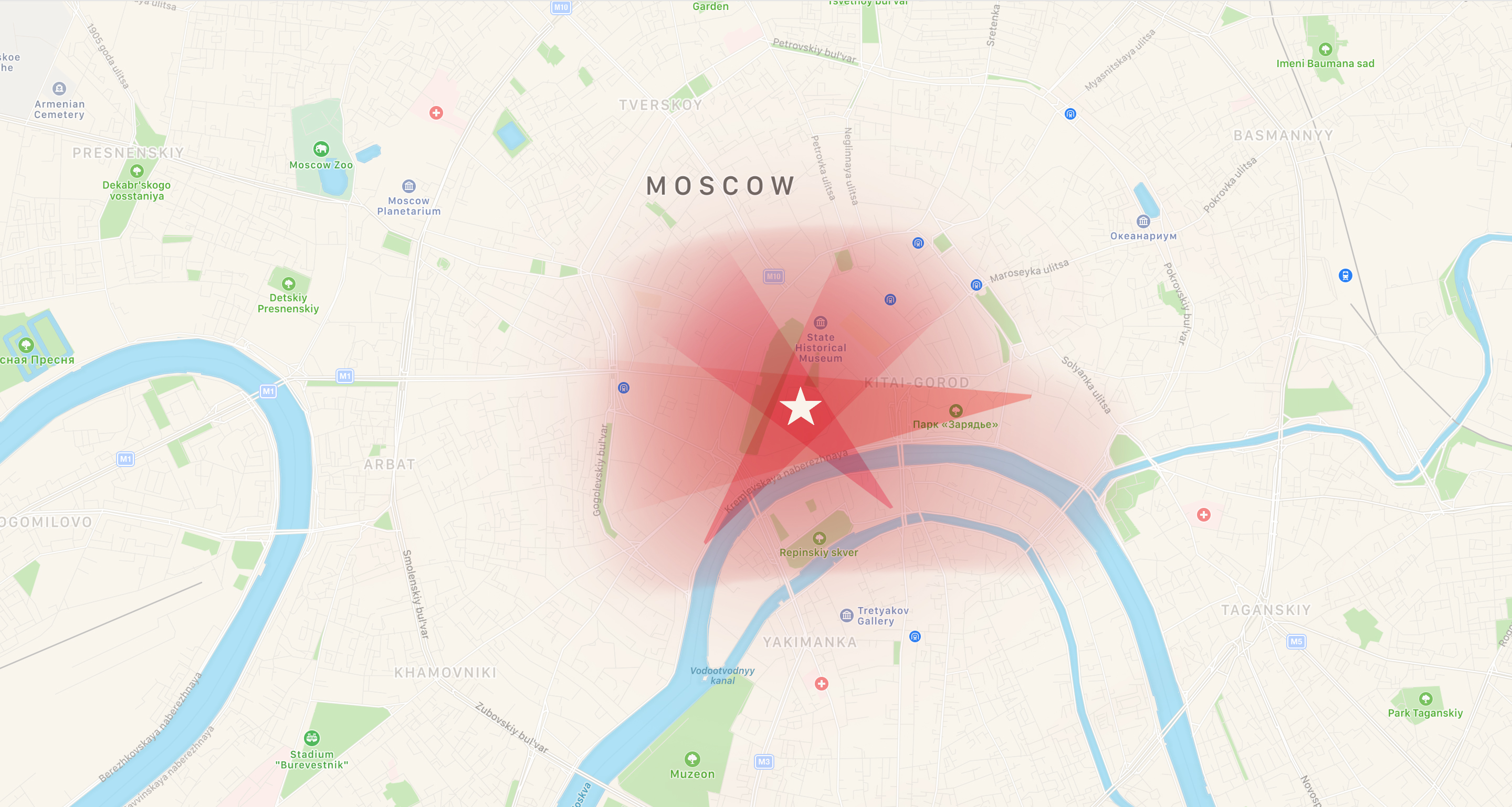
The hardline fencing tactic still leaves us with the problem of separation and segregation: the act of disabling a certain service in one area might generate unforeseen effects for the outside, behind the safeguarding walls. Protecting a selection of buildings or neighborhoods might aggravate the proliferation of elitist, gentrified limited access zones. Can we think of more subtle examples of zoning that do not trigger new partitions in public space? Verticality can provide multiple options and platforms for one geolocation. Zones can be stacked on top of other zones, truly augmenting reality – adding onto what is already there. In the following examples, we will try to figure out how zoning can counter the aggression of platform capitalism.
Reinventing the Zone
The platform economy extracts capital from the behavioral patterns of citizens in public space. What if physical zoning could allow citizens to gain agency over the systems of data extraction? Google Urbanism, a graduation project by students of the Strelka Institute, proposes a model which makes the added platform value, produced by – in this case – Google, flow back into the public space where the value is ‘mined’. This happens through exclusive licenses sold by the municipalities that allow companies to extract data from certain locations, forcing them to reinvest part of their profits in the maintenance of public space. Cities currently may not have a leverage to enforce such a platform/citizen partnership with Google, but they might get hold of their streets again by implementing and testing different kinds of legislation that bring forth new mechanisms of value creation.
Vertical zoning can alter the very way in which capital manifests itself. The ‘Bristol pound’ is an example of city-scale local currency, created specifically to keep added value in circulation within one city. It is accepted by an impressive number of local businesses and for paying monthly wages and taxes. Though the Bristol Pound still circulates in paper, today we can witness a global sprawl of blockchain based community currencies, landing within big cities or even limited to neighborhoods. Remarkably, Colu Local Digital Wallet can be used in Liverpool, the East London area, Tel Aviv and Haifa – areas with a booming tech landscape or strong sense of community.
To prevent a total Songdo-like smart technology takeover, new urban zoning might enable citizens to self-organize and provide services themselves. The ideal utopian platform would be owned and controlled by its users, serving as a cooperative service where everyone is able to invest and everybody benefits. But building such a model from the ground up can be problematic (see platform co-ops such as the Green Taxi Cooperative), and gaining leverage through user numbers is difficult due to a lack of resources and the network effect. After all, the platform is only valuable to its users if enough people join in. Therefore we can think about a more practical, middle ground approach, utilizing existing corporate platforms and the network they provide. Even though the platform still profits off the user’s activity, the user begins to extract new, unintended value from its operation, exploring alternative social functions of augmented urbanity.
For example, in Holland, citizens cooperate to organize local security services, utilizing cross-platform messaging service WhatsApp. Inhabitants of a specific neighborhood participate in a group chat and text each other about suspicious situations. Special signs warning for the ‘WhatsApp Neighborhood Watch’ can be bought and placed in public space to mark this new urban zone. A recent study in the Dutch city of Tilburg concluded a forty percent drop in registered burglaries in neighborhoods in which these WhatsApp groups were active.
Enlarge
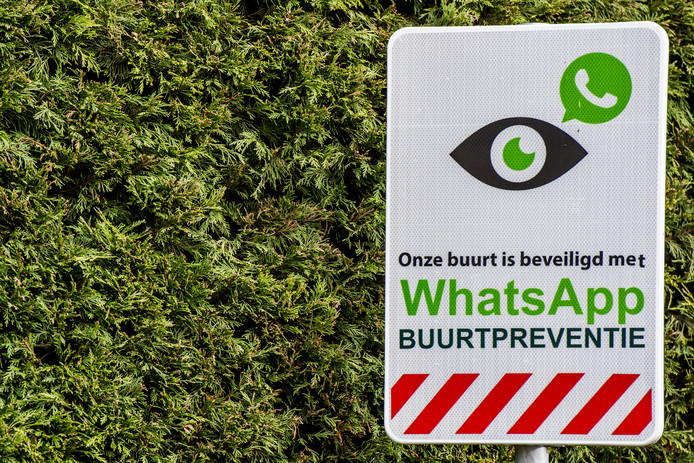
What characterizes this self-regulated hybrid space is that it offers entrance and exit by choice: for the WhatsApp Neighborhood Watch, there is a central database which registers all groups, but anyone can start one, and anyone living in the same neighborhood is free to join. While its functionality completely depends on the voluntary input from its users, it operates on a platform originally not intended to fulfill the function of a communication channel for neighborhood security. The operation of both the WhatsApp group and the Bristol Pound relies on a principle of stacking and elasticity: while some WhatsApp zones may overlap, other places might have no group at all, and if citizens can choose different digital currencies, local shops can decide for themselves to accept any of them.
Vertical Futures
The previous examples illustrate what kind of material effect different zones can have on the city: Google Urbanism enables capital to flow back into the city, the Bristol Pound keeps value in one place for a while, and the WhatsApp Neighborhood Watch allows citizens to take control and self-manage a commonly centralized service. In the future, we can imagine this soft zoning might offer counter-mechanisms that enable citizens to take action, utilizing the same tools and methods that generate so much value for the tech giants.
Enlarge
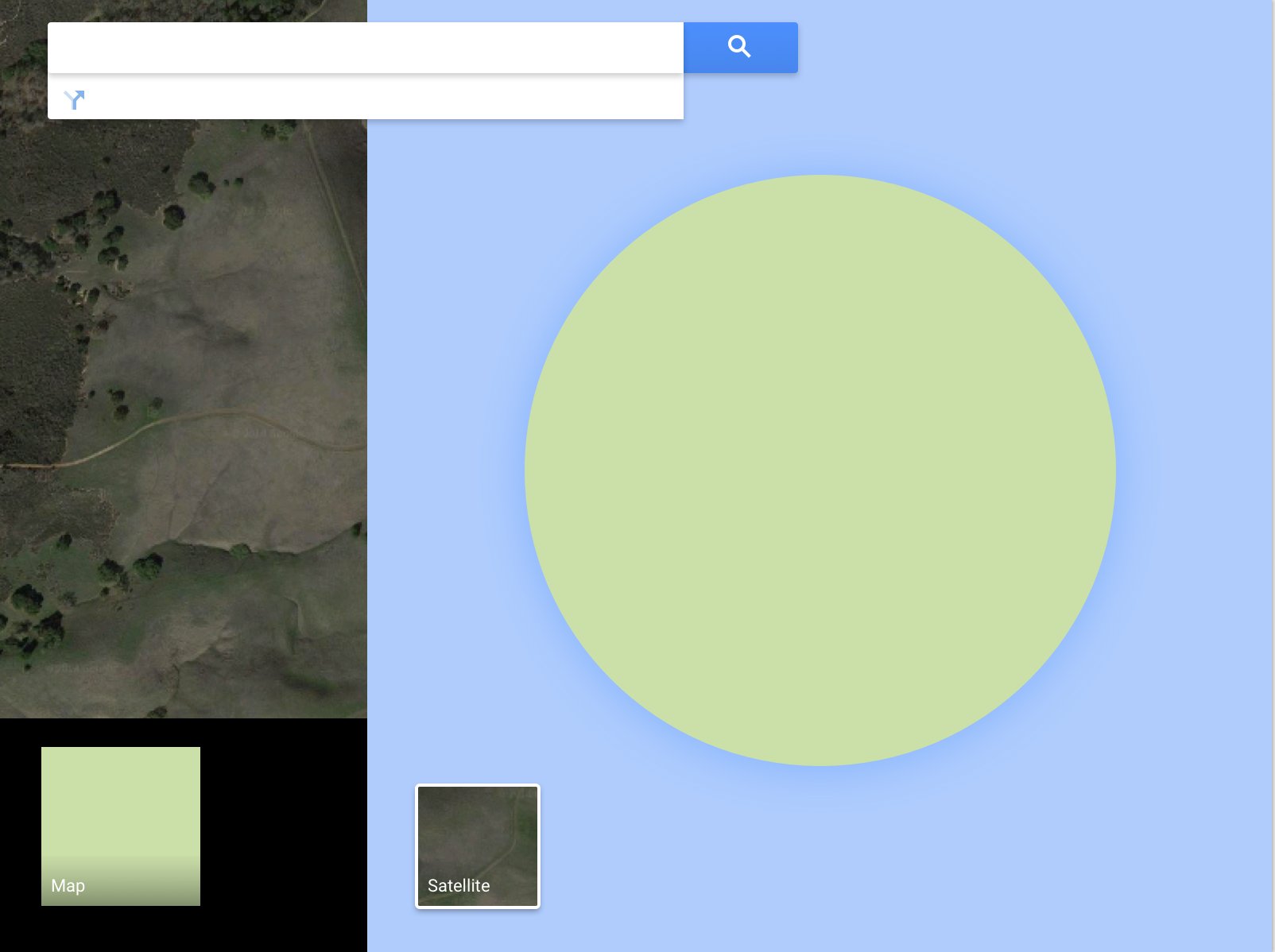
Taking action within the context of vertical zoning can be translated as a shift from being approached as a user – one who benefits from the easiness and luxuries of the platform (and surrenders to its monopolistic tendencies) – to being approached as a citizen – one who is politically empowered and bears legal rights to demand alternative models. Political bodies can enhance citizenship through vertical zoning, repelling the current smart-city dogma based on information exploitation and the uneven nature of the user-platform relationship.
Vertical Zoning enables the city to take on a hostile approach and use zoning for GPS spoofing or banning Pokémon, but it can also create the circumstances for citizens to experiment with alternative approaches to new technologies, and create financial instruments that support new initiatives. New Zones don’t necessarily have to draw out new land to reclaim and populate; they should be mapped onto the city as it is. A more collective, inclusive and social approach to Zoning might enable the city-state to prevent disbandment of urban life.
As we move through the city, we realize that any place we step on is not just a dot on a map: it is an arrow piercing through a multiplicity of different grids, overlapping each other on the vertical axis. While platforms are seeking new uncharted terrains to colonize, we can think of pro-actively designing spaces with a potential to enable alternative functions of the tech ecology that surrounds us; exploring new forms of regulation, exchange and inhabiting, constructing non-capitalist social relations within them. We call for new, temporary, flexible, autonomous Zones that don’t seek liberation from the state, but try to reimagine its role today – appropriating zoning as a tool, using it to our own ends, flipping the borders, turning the tide.
References
Alvin Chang, How the Internet Keeps Poor People in Poor Neighborhoods, Vox, 12 December 2016, https://www.vox.com/2016/12/12/13867692/poor-neighborhoods-targeted-ads-internet-cartoon.
Ben Vollaard, Martijn Akkermans, Effect van het WhatsApp-project in Tilburg op het aantal woninginbraken – een evaluatie, October 2015, https://hetccv.nl/fileadmin/Bestanden/Onderwerpen/Woninginbraak/Documenten/Effect_van_het_WhatsApp-project_in_Tilburg_op_het_aantal_woninginbraken/tilburg-whatsapp_191015.pdf.
Eric Newcomer, Uber Starts Charging What It Thinks You’re Willing to Pay, Bloomberg.com, 19 May 2017, https://www.bloomberg.com/news/articles/2017-05-19/uber-s-future-may-rely-on-predicting-how-much-you-re-willing-to-pay.
Google Urbanism, http://googleurbanism.com.
Larry Page, Google I/O 2013: Keynote, YouTube, 15 May 2013, https://www.youtube.com/watch?v=9pmPa_KxsAM.
Seasteading - Cities on the ocean, The Economist, 3 December 2011, http://www.economist.com/node/21540395.
Wayne Arnolds, Singapore Makes a Pitch to Draw the Wealthy, The New York Times, web, 26 April 2007, http://www.nytimes.com/2007/04/26/business/worldbusiness/26singapore.html?pagewanted=all.
